Roland announce Jupiter-X Flagship synthesizer and Jupiter-Xm sidekick
Wait, is it 909 day already? No, but Roland has decided that now is the time to invigorate their synthesizer line with the brand new and desperately cool Jupiter-X and the hipster Jupiter-Xm.
Jupiter-X
Wow, it looks the part. It hooks into all the emotional Roland vibes hitting you with stripes of orange, classic sliders, 808 style buttons and vintage styling packed into a large and somewhat imposing form. Without hearing a single sound it hits all the notes that the System 8 miserably failed to do. Is this the synthesizer we’ve been waiting for?
You are currently viewing a placeholder content from YouTube. To access the actual content, click the button below. Please note that doing so will share data with third-party providers.
But let’s get the first question out of the way – is it analogue? No, no it isn’t. Right, so once we’re past that revelation we can start to enjoy what it actually is. Roland is staying true to their path of virtual synthesis and circuit modelling. But this doesn’t appear to be ACB (Analog Circuit Behaviour) like that found in the Boutique range and System 8, this is a whole new sound engine they are calling “ZEN-Core” within which can run various model sound generators. I think the idea is that it can pretty much be anything you want.
The Jupiter X can morph into all sorts of legendary synthesizers like the Jupiter-8, Juno-106 and SH-101. But it can also be a digital piano or a workstation synth like the XV-5080. There’s no mention of “plug-out” technology so I have to assume that the ZEN-Core can run all of Roland’s synth models without any of that messing about with plug-out slots.
I guess because it can be all sorts of synths then the fabulous array of front panel controls will change depending on what’s loaded. But as a starting point you appear to have an LFO, 4 oscillators with detuning and mixer, 2 envelopes and an effects section. There’s an arpeggiator which apparently employs artificial intelligence to be inspiring – that sounds a bit weird and seems to take it dangerously close to auto-accompaniment territory.
The Jupiter X is also a drum machine which accounts for those 16 808-coloured buttons. It has all the drum sounds from the TR-808, TR-909, CR-78 and many more. The drum machine can run alongside the synthesizer in its own layer. The synth itself can load up 4 layers of synthesis either working together or independently, and you can split them across the keyboard which again points towards its workstation credentials.
What else do we know? Well, the specs are actually a bit vague. It says it has “loads of polyphony”, over 4000 presets and 256 “scenes”, 90 effects, a semi-weighted keyboard with channel aftertouch. And wait a minute, it seems to have built-in speakers – although that might just be a copy/paste issue from the specs of the Xm which does have speakers – look:
I guess the speakers could be in front panel behind the grill:
There’s no mention of CV but it does have a USB port for upgrading and expanding the sounds. So my initial drooling over this beast of a synthesizer is tempered somewhat by the workstation flavour but only in as much as I have to change my perception a bit and give it a chance to be more than a synth.
Jupiter-Xm
The Jupiter Xm is rather good looking, well-sized and engaging. It’s designed to be the synth you take with you whereas the Jupiter-X is more likely to be planted in your studio. It has all the same vague specs as the Jupiter-X, including the drums and effects and so I have to assume it’s essentially a portable version of it.
The keyboard is only 3-octaves and they are not full-sized but still has aftertouch. The front panel is given over the knobs rather than sliders and is simplified a little. It has a similar build quality to the Jupiter-X, has some orange stripes but is overall less colourful. The Sonic State video below takes you through the sound engines in a bit of a “first look” sort of way and it’s very strange to see acoustic piano sounds come out of something that looks so synthy.
You are currently viewing a placeholder content from YouTube. To access the actual content, click the button below. Please note that doing so will share data with third-party providers.
Jupiter Party
All right so does Roland hit it out of the park and into space with the Jupiter-X? The look is stunning and the range of sounds is completely awesome and for people looking for a workstation synthesizer that’s going to work in every production situation then this is the daddy. I need to see and hear more about it before I make up my own mind but it would look amazing sitting just over there. The Jupiter-Xm is a great idea and if it’s all digital then why not share the power of the sound engine in a smaller and more accessible form.
The Jupiter-X is not going to be available until next year and will retail for $2499. Shame about the release date and is probably why no one is making any videos on it yet. The Jupiter Xm, on the other hand, is going to be released right now and you can get one for $1499.
More information
8 responses to “Roland announce Jupiter-X Flagship synthesizer and Jupiter-Xm sidekick”

 4,7 / 5,0 |
4,7 / 5,0 | 

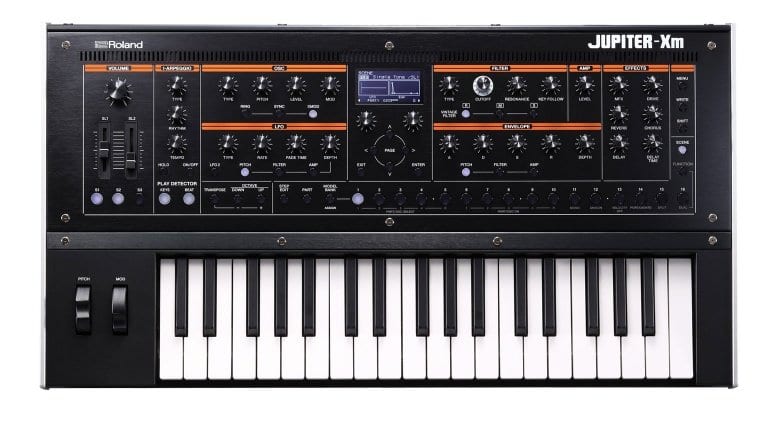
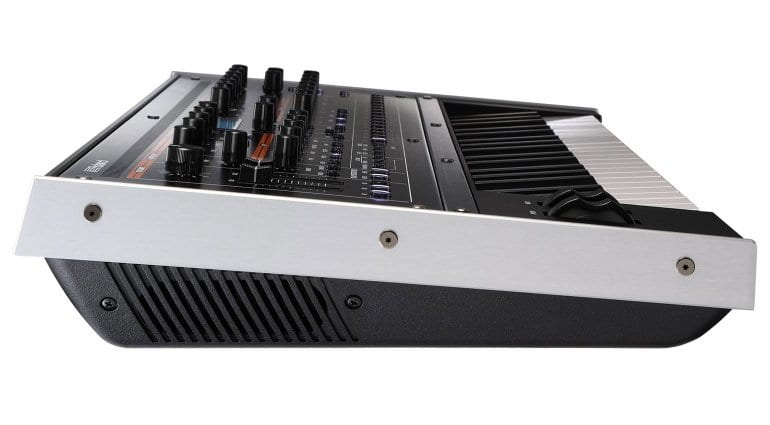




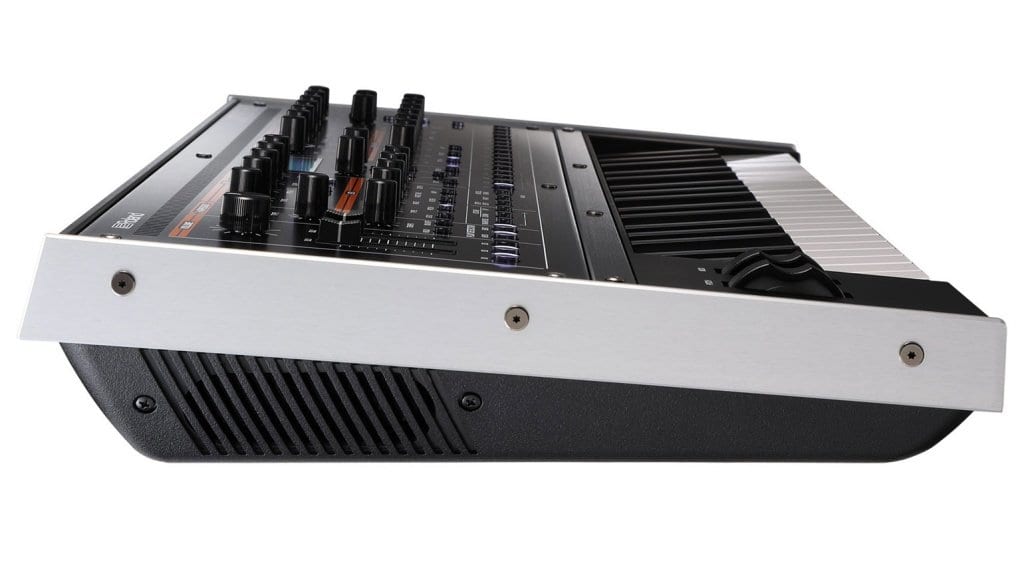
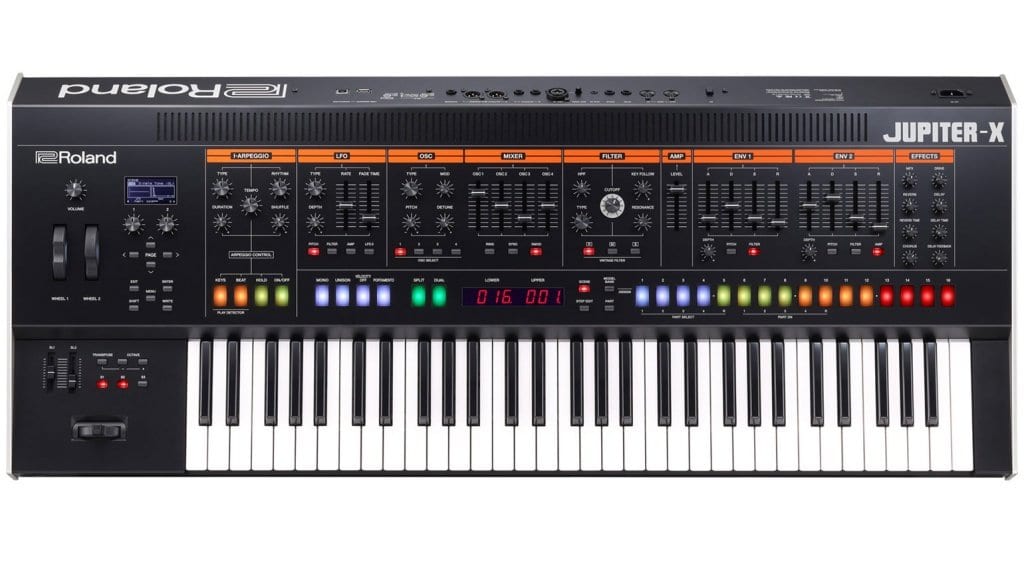



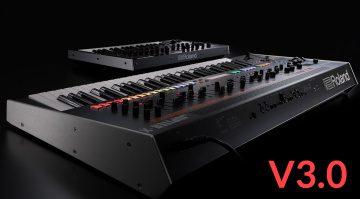
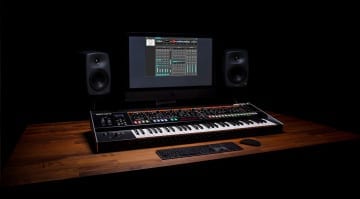
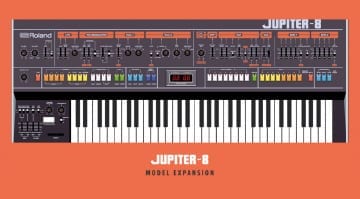
meh.. plus they are way too expensive for what you get!
Where to get an Xm right now?
you say the xm is released right now, but no one has them, not even sweet water. and until i see a non roland video with a real side by side comparison with a jupiter 8 it is all pointless speculation. i think roland are keeping a tight leash on the demos, daniel fisher hasn’t done a video review yet… this makes me very suspicious.
The 19th September is, I believe, the release date.
I only see three octaves on the xm, and that’s not a guess unless much of this news
Thanks – updated! There was a lot of guess work in this article because information was scarce. I used the words “i guess” in the article to indicate that 🙂
I’m old-fashioned enough to think that makes it not news. I also think the xm (which I’m very intrigued by) doesn’t have channel aftertouch on the kets but does respond to it. I’m also thinking of getting a System 8 – you mention unspecified failings of the System 8 – can you point me at your review so I can determine if those are relevant to my needs? Thanks!
I think you might be misunderstanding our intention at Gearnews. Regardless of the content of the article, it is news that Roland has announced two new synths. At that point we have a choice – we can reprint the press release like every other music tech website or we can put together our own opinion led thoughts on the subject, and that’s what we try to do. So it will often include subjective and sometimes unsubstantiated remarks and opinions of us as humans. We think that makes us interesting 🙂
So with reference to the System8 – my opinion is that the styling and colouring of it are completely awful (I tried to like it, I really tried). It sounds great and the possibility of the plug-out instruments are interesting although when playing the thing (as I have) you don’t get the feel of the Juno or a Jupiter 8 because the System8 layout and screaming green remains the same. That works fine for a great many people but it doesn’t personally float my boat. The Jupiter X, on the other hand, carries a larger sense of these older synths that appeals to me.
You are currently viewing a placeholder content from Facebook. To access the actual content, click the button below. Please note that doing so will share data with third-party providers.
More InformationYou are currently viewing a placeholder content from Instagram. To access the actual content, click the button below. Please note that doing so will share data with third-party providers.
More InformationYou are currently viewing a placeholder content from X. To access the actual content, click the button below. Please note that doing so will share data with third-party providers.
More Information